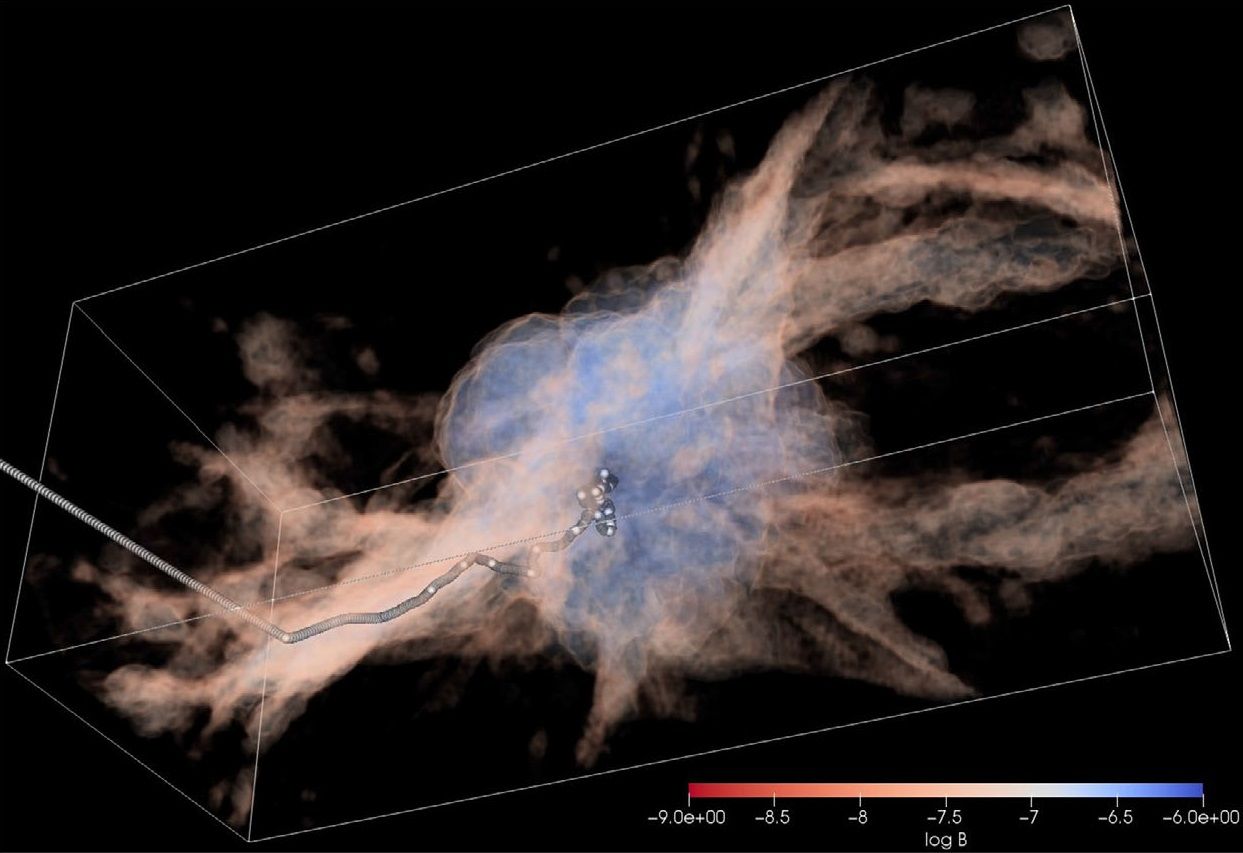
A team of Korean scientists has cast new light on a mystery that has puzzled astrophysicists for decades: the origin of ultra-high-energy cosmic rays, or UHECRs. They are a form of radiation that has an energy greater than a threshold known as the Greisen–Zatsepin–Kuzmin limit. They mostly come from outside the solar system.
Since their initial discovery in the early 1960s, UHECRs have only been observed on a small handful of occasions by scientists. As such, it is still not clear what is producing them, although researchers are fairly certain they mostly come from outside the Milky Way galaxy.
Among the candidate sources for UHECRs that have been proposed are unknown heavy dark matter particles, gamma-ray bursts, radio galaxies (galaxies which are very luminous at radio wavelengths,) cosmological defects (extremely high energy phenomena that are remnants from the universe's formation) and shock waves in clusters of galaxies.
Read more: Scientists are about to start hunting for the universe's hidden realm
To understand more about the strange phenomenon, an international collaborative project was set up—the Telescope Array (TA) project, which is designed to collect data on UHECRs. For their latest study, published in the journal Science Advances, the Korean scientists chose to focus on recent findings from the TA—the detection of a high concentration of UHECR events in the northern sky, referred to as a hot spot.
Unexpectedly, there was not a similarly high concentration of nearby galaxies that could have contained the source of these cosmic rays. While the Virgo cluster—a vast collection of galaxies that is the closest large cluster to the Milky Way—was touted as a possible source for the high concentration of UHECR events, it was initially discounted because it lies 50 degrees away from the center of the hot spot.
To try to solve this mystery, Jihyun Kim, from Ulsan National Institute of Science and Technology in South Korea, and colleagues analyzed a database of nearby galaxies, finding that they were closely associated with three "galaxy filaments," which are connected to the Virgo cluster.
According to Swinburne University of Technology's online encyclopedia of astronomy, when we look at galaxies on vast scales, it is clear that they are not distributed randomly throughout the universe but are instead organized into a web-like pattern, connected by vast structures known as filaments. These filaments are some of the largest structures in the universe, measuring hundreds of millions of light-years across while containing millions of galaxies.
In light of their findings, the Korean researchers proposed that the UHECRs were actually being produced inside the Virgo cluster but didn't appear to be emanating from it because the rays travel along the galaxy filaments.
"[The findings] could imply that UHECRs around the concentration may have been produced at sources inside the Virgo Cluster, [which] escaped to and propagated along filaments, before they were scattered toward us," Dongsu Ryu, an author of the study, told Newsweek.
This model could potentially help scientists to home in on the origin of UHECRs in the future.
"The source or sources of UHECRs could be 'known' astronomical objects, such as radio galaxy Virgo A or shock waves in the Virgo Cluster, rather than unknowns, such as cosmological defects or dark matter particles," Ryu said.
This article has been updated to include additional comments from Dongsu Ryu.
Uncommon Knowledge
Newsweek is committed to challenging conventional wisdom and finding connections in the search for common ground.
Newsweek is committed to challenging conventional wisdom and finding connections in the search for common ground.
About the writer
Aristos is a Newsweek science reporter with the London, U.K., bureau. He reports on science and health topics, including; animal, ... Read more
To read how Newsweek uses AI as a newsroom tool, Click here.








